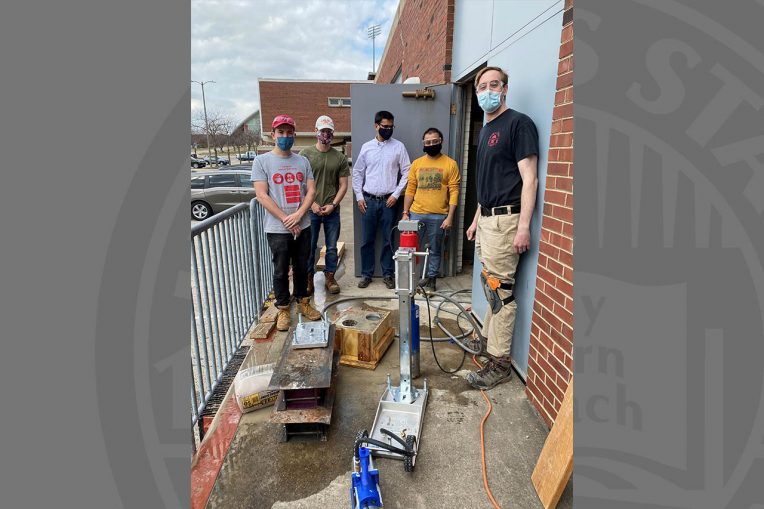Dr. Pranshoo Solanki and Dr. Sally Xie, construction management professors were awarded a two-year, $250,000 grant for their study, “Influence of Field Curing Conditions on Strength of Concrete Test Specimens.” Concrete curing is defined as providing adequate temperature, moisture, and time to allow the concrete to achieve the desired strength and durability for its intended use. In the field, concrete is cured until it has achieved the desired strength. The field-cured specimens are used for an estimation of the real-time strength of the concrete structure. However, according to the Illinois Department of Transportation (IDOT), the current field-curing method appears not to develop strength similar to in-place concrete structure due to environmental factors.
During the IDOT project, I was able to learn how to use technical laboratory machines and also utilize the time management and project management skills I learned in my project management master’s degree program.” said Harsh Chauhan, project management graduate student.
Dr. Solanki and his student team, Brendon Phillips and Russell Smallwood, construction management undergraduate students, and Harsh Chauhan, Juhi Patil, and Tejaswi Reddy Katangur, technology graduate students, are working on preparing and testing field-cured concrete specimens to mimic field-testing used in concrete construction. A total of five 36” x 36” x 12” and five 24” x 24” x 8” concrete slabs will be poured on the southeast corner of the Turner Hall parking lot.
“During the IDOT project, I was able to learn how to use technical laboratory machines and also utilize the time management and project management skills I learned in my project management master’s degree program.”
Harsh Chauhan, project management graduate student
Slabs will be installed with 40 cast-in-place cylindrical molds and temperature/relative humidity sensors. Additionally, four cylindrical cores will be extracted from each slab using a coring machine. Around 150 cylindrical and 56 beam specimens of concrete will be cast which are cured using different curing methods. Selected specimens will be placed inside a cooler and thermostatically controlled curing box. A wooden curing box will also be constructed using insulation material as a liner for providing protection to concrete specimens against cold temperatures. These different methods will simulate the temperature and humidity of in-place concrete structures such as roads and bridge piers.
“Sensors are used to measure the internal concrete temperature and relative humidity data. A total of 48 sensors will be used for monitoring temperature and relative humidity in the concrete slabs, cylinders, and beams. The data is collected with the help of a software application which is called the OneWire Viewer.” said Tejaswi Reddy. The OneWire Viewer is a Java demonstration application for exploring the sensor details. Concrete mix is prepared, and then casting and curing of concrete slab, cylinders, and beams. The temperature and relative humidity data are collected using a sensor.
“A total of 48 sensors will be used for monitoring temperature and relative humidity in the concrete slabs, cylinders and beams. The data is collected with the help of a software application which is called as the OneWire Viewer.”
Tejaswi Reddy, project management graduate student
The ultimate goal of this study is to develop specifications or guidelines for field-curing of concrete test specimens that more accurately represent the strength of an in-place concrete item. A more reliable method of field-curing is needed to better determine if a concrete structure may be put into service. In addition, the study will help to determine early falsework/formwork removal and concrete road opening times during different conditions in Illinois.




